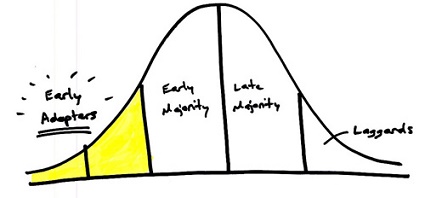We all know one – the person who is always first to try a new product or service. They can be both illuminating and annoying; they are the ones that tell you about Airbnb or Uber or the new version iPhone before you have even heard of the company or the product. The early adopter is an early customer of a given company, product, or technology.
Early adopters have counterparts, known as laggards and Luddites, at the opposite end of the human spectrum. Laggards are slow or reluctant to embrace new technology because of disinterest or financial constraints. Luddites actively fear or loathe new technology, especially those forms they believe threaten existing jobs or roles. It is now glaringly obvious in the accounting and bookkeeping space that the early adopters have embraced cloud technology and the manifold benefits of the ecosystem surrounding it. The question before the industry and the professions applying the technology is who are the laggards?
Luddites and laggards

Integral to the advancement of technology disruption in the accounting and bookkeeping space is terminology. Whereas travel laggards walk into a travel agent to work out their travel plans and bookings (how valuable is your time?) the “early majority” of technology adopters use trivago to source best accommodation solutions for their travel plans and/or expedia to source the best deals. Money and time is saved writ large. In a similar fashion the early majority accounting or bookkeeping professional is using one (*or more) of the accounting software tools and interesting the add-ons to suit the clientele.
Laggards will miss out
Entrepreneurs go into business, for the most part, to pursue something they’re uniquely good at, passionate about, or simply love doing. Only a very tiny percentage of them want to have direct involvement in designing, implementing, and operating their business processes. That is, their accounting, ecommerce, point of sale, payroll, accounts receivable, accounts payable, expense management, and cash flow projections. If you put yourself in a trusted advisor role to help find the technology and business process solutions that fit their needs, you can deepen your relationship and value-add for each client.
You’ll find hundreds of potential solutions out there but the key challenge is finding the right match between client needs and vendor solutions. You cannot be a laggard and get into this stuff.
There is nobody on earth who is more capable of evaluating and advising clients on the right solutions for their business than YOU.
Need a plan to transition to a value-based firm? Check out our eBook Practice Guide 2016

